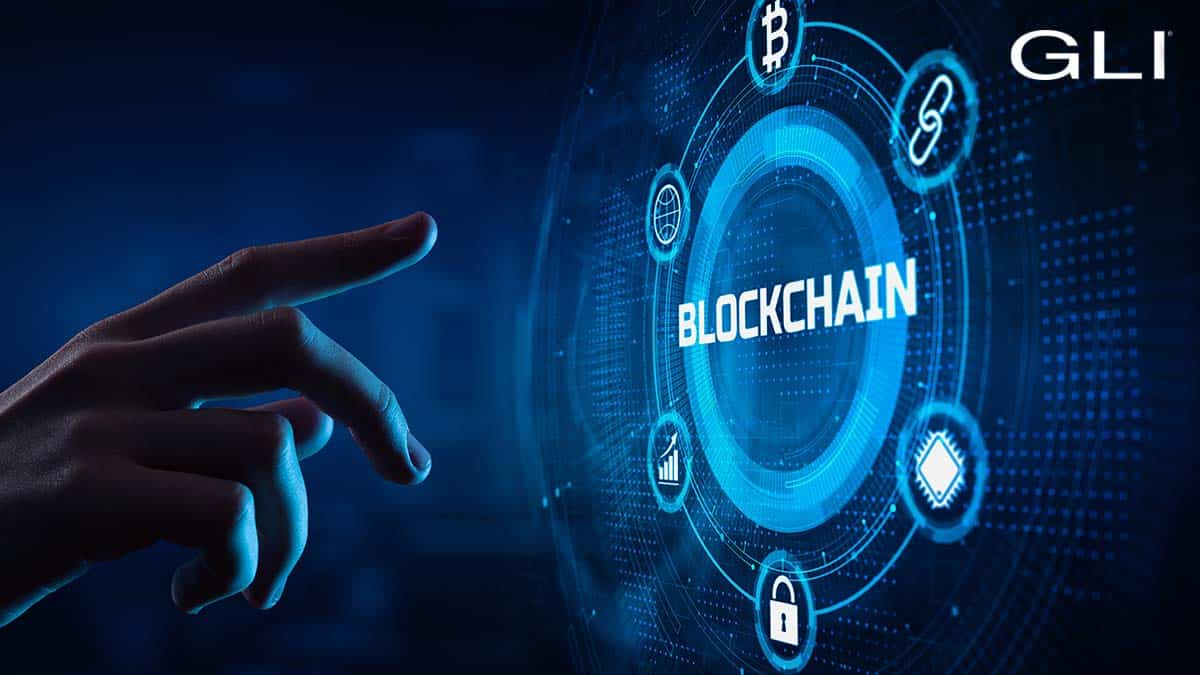< Back to All Blogs
Blockchain Basics: What is Blockchain?
By Mackenzie Haugh
April 14, 2022

Editor’s note: This is the first entry in a new series called “Blockchain Basics.” Whether you’re a regulator or operator, knowing the basics of blockchain will help you make informed decisions as suppliers create using this technology. For more information, or for a more detailed explanation of blockchain in your jurisdiction or on your property, contact your GLI representative.
By Mackenzie Haugh
An internet search for “blockchain” will yield myriad results. Most with quite accurate descriptions, but each with its own twist, and some providing an incredible number of details and terms, which creates a “chain” of more searches for definitions of those terms, making it difficult to truly understand. For better or worse, internet surfers frequently turn to Wikipedia as a starting point, and when it comes to blockchain, Wikipedia states: “A blockchain is a decentralized, distributed, and oftentimes public, digital ledger consisting of records called blocks that are used to record transactions across many computers so that any involved block cannot be altered retroactively, without the alteration of all subsequent blocks.” OK, so what does that mean?
Let’s begin to break this down to better understand what a blockchain is:
- Decentralized. The easiest way to think about this is that the data is not stored in one “central” place/server. It is instead distributed across many places/nodes via a peer-to-peer network. You may recall that “Napster” worked similarly where users would host songs for others to share, which evolved into the “BitTorrent” file distribution system, which is still quite active today.
- Distributed. One can think of this as the way that the nodes work together across the network to achieve the intended goal. In the case of Bit Torrent mentioned earlier, a file is broken into pieces and is stored across nodes. When a user wants to download the file to his or her device, the BitTorrent protocol allows all nodes to work together to have their portions of the file be accessed/downloaded, resulting in a single usable file instead of some out of sequence data mass. In the case of a blockchain, the nodes follow protocols to confirm validity of transactions.
- Digital Ledger. Think of a physical accounting ledger today. It is a log which records various information regarding a transaction (date, description, credit amount, debit amount), leaving a fully traceable and auditable history of all transactions. A digital ledger is just that, a digital version of that same physical one, but in the context of blockchain may have different transaction attributes, which is why many CPAs better equate this to a digital version of an “accounting journal.” The important thing regarding any ledger is that it’s a running list of transactions. There are no edits or strikethroughs, corrections are made on the next transaction or when discovered, so there is ALWAYS full history of all transactions.
- Block. There are many established blockchains out there, and each is structured in a way to define the storage limitations of its’ blocks. Think of the digital ledger again, if this is an endless overview of all transactions of a blockchain, then the blocks themselves are like the individual finite ledgers which “fill-up” necessitating a new one. Much like with physical ledgers, you start a new one from where the old one left off, and blocks are no different, with each new one linking directly back to the previous (forming the “chain”). The great thing about blocks in the chain is that each block contains a hash (or signature) of the entirety of the previous block and is why the chain is secure and prevents any edits/changes without everyone on the chain knowing/agreeing.
- Public and Private Blockchains. As you can expect, a public blockchain is one which everyone has access to, provided they are on the network. Conversely, a private blockchain is permissioned, limiting access to only specified users.
Now when you think of blockchain, hopefully you have a picture in your head of a digital ledger made of one or more blocks, with each block containing transaction information and fully linking all transactions chronologically. And since a blockchain provides a digital, transparent, accurate, permanent ledger at a reduced cost (because it’s decentralized or, in other words, you don’t pay someone to manage it), it is often used for secure sharing of medical data, financial and real estate transactions, artist royalty tracking, global shipping tracking, and of course cryptocurrency exchange and money transfers.
Check back to our blog every month as we continue to help you build your basic knowledge of blockchain. Additionally, always feel free to contact your GLI representative. We’re here to help.
Mackenzie Haugh is GLI’s Vice President of Engineering
< Back to All Blogs
